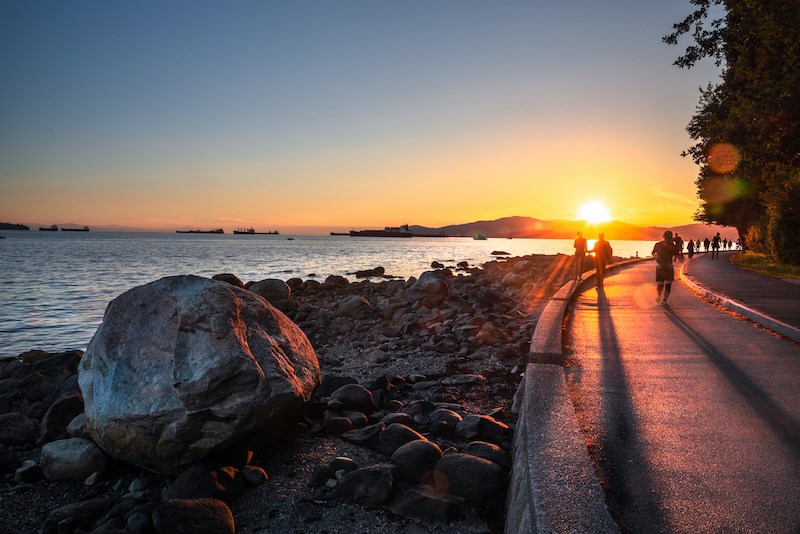Vancouver's seawall is one of the most iconic parts of the city.
Popular with both tourists and locals, the lengthy foot and cycle path around a good chunk of the city's waterfront is popular for transportation and recreation.
Along its way are many iconic sites and sights, making it not only fun for tourists but useful for those easily lost. For locals it's generally considered a nice way to get around or be physically active.
Here are five things you (probably) didn't know about the iconic walkway.
1. It took decades to finish
While building a wall around the waterfront seems like a simple and straightforward task, it took a surprisingly long time to do it all. That's partly because it wasn't all done at once, with the earliest bits dating back to around 1917.
The Stanley Park section was officially opened in 1971, but the last parts weren't actually put in place until 1980, and extensions were added after.
2. One man was responsible for much of it, and his ashes were spread near Slhx̱i7lsh (Siwash Rock)
James Cunningham is the man most associated with the long wall. A master stone mason, the Scotsman was responsible for building the wall from the 1920s into the 1960s. Even after he retired there are stories of him visiting the wall to make sure it was going ok.
3. It holds a world record
It's the world's longest uninterrupted waterfront path.
Despite this, the beginning (at Canada Place) and the end (near Kitsilano Beach) are only 4 km apart.
4. The bases of graves were used at one point
In the 1960s the military area of Mountain View Cemetery was being renovated. As part of that, the granite blocks used to raise the markers off the ground were removed, and the markers set flush with the ground.
Those blocks, often, were then taken down to the seawall, to be added in.
5. A section is called Existential Alley
A section in David Lam Park is called Existential Alley in a variety of places online. It's a gravel path right along the water.
Oddly how it got its name is unclear, and Google Streetviews hasn't dared (or had the time) to go down the alley.
However, others have, and some of their online reviews are...something else.
"10/10 spot when having an existential crisis. Bring snacks," writes one.
"Although I just want to be like all the different people this alley was too popular due to its uniqueness for me to endorse it," notes another.
"It is; therefore, it exists," finishes one of the longer reviews.




